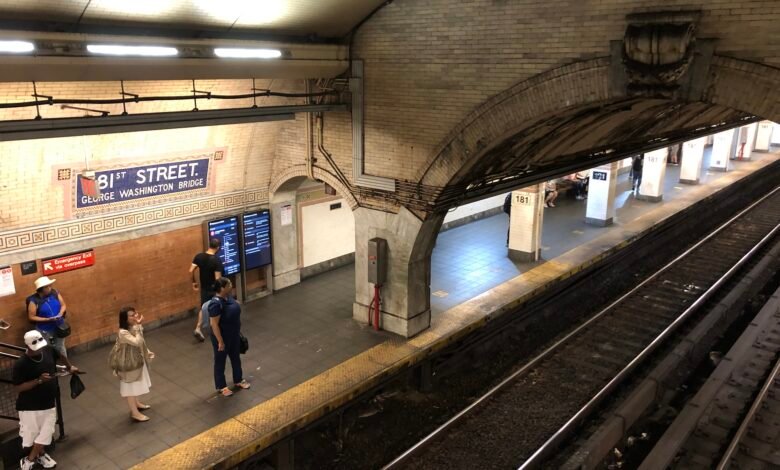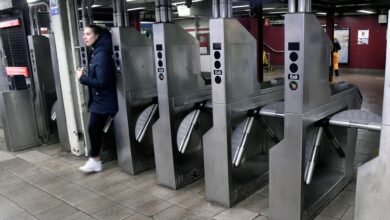MTA looking into cooling subway stations with geothermal technology


The MTA is exploring a new way to cool sweltering subway stations: geothermal technology. According to a request for information (RFI) published last week, the agency is considering a system that would use the Earth’s subsurface to transfer heat out of stations and store it elsewhere, to keep platforms between 82 and 85 degrees on hot days. As first reported by The City, the MTA is targeting the 1 line’s 168th Street and 181st Street stations, which rank among the system’s hottest because of their depth.
In practice, the system would use pumps to tap into the Earth below, cooling stations on hot days, and warming them on colder ones. The technology would also need to withstand steel dust concentrations, water conditions, vandalism, and the constant shaking and vibrations from passing trains.
According to the document, the MTA subway tunnels are equipped with 209 giant fan plants that provide ventilation throughout the system and serve as smoke ejectors in the event of a fire. On most days, however, these fans remain off, leaving the movement of trains as the only source of ventilation, which pulls air in and out of tunnels via passive “piston” ventilation.
Even when running, the fans combined with the piston effect cannot adequately combat extreme heat, especially in deep stations prone to higher temperatures. Ventilation can only lower indoor conditions to match outside air, but cannot cool stations below the outdoor temperature.
For riders on the 1 line, the extreme heat is worse because many stations are 120 feet underground, where there are no vents to release the hot air. Heat from the system’s electronics and other equipment also adds to the problem.
“Today, underground subways have multiple additional heat sources related to subway operations, including heat generated from communications and electronics equipment, the air conditioning units that keep communications equipment cool, and train car air conditioning units,” the document said. “While air-conditioned cars reduce temperatures inside subway cars, that heat is rejected outside of the car into adjacent stations and tunnels.”
While most of the subway system lacks active cooling due to construction challenges and cost constraints, a handful of stations have been equipped with air-tempering systems and fans. These include the 7 line’s Hudson Yards station and the Q line’s three new Upper East Side stops.
In September 2023, the MTA issued an RFI seeking insight on innovative, cost-effective cooling technologies for subway stations. The feedback informed recent heat mitigation efforts and shaped this latest request.
The MTA’s further exploration into geothermal technology to cool subway stations follows the agency’s release of its “Climate Resilience Roadmap” in April 2024, which projected that days with temperatures above 90 degrees could triple by the 2050s, with the number of heat waves annually rising from two to seven, according to The City.
According to the report, the MTA projects that New Yorkers could experience 30 to 70 high-heat days annually, up from the current 18.
RELATED:
Source link




